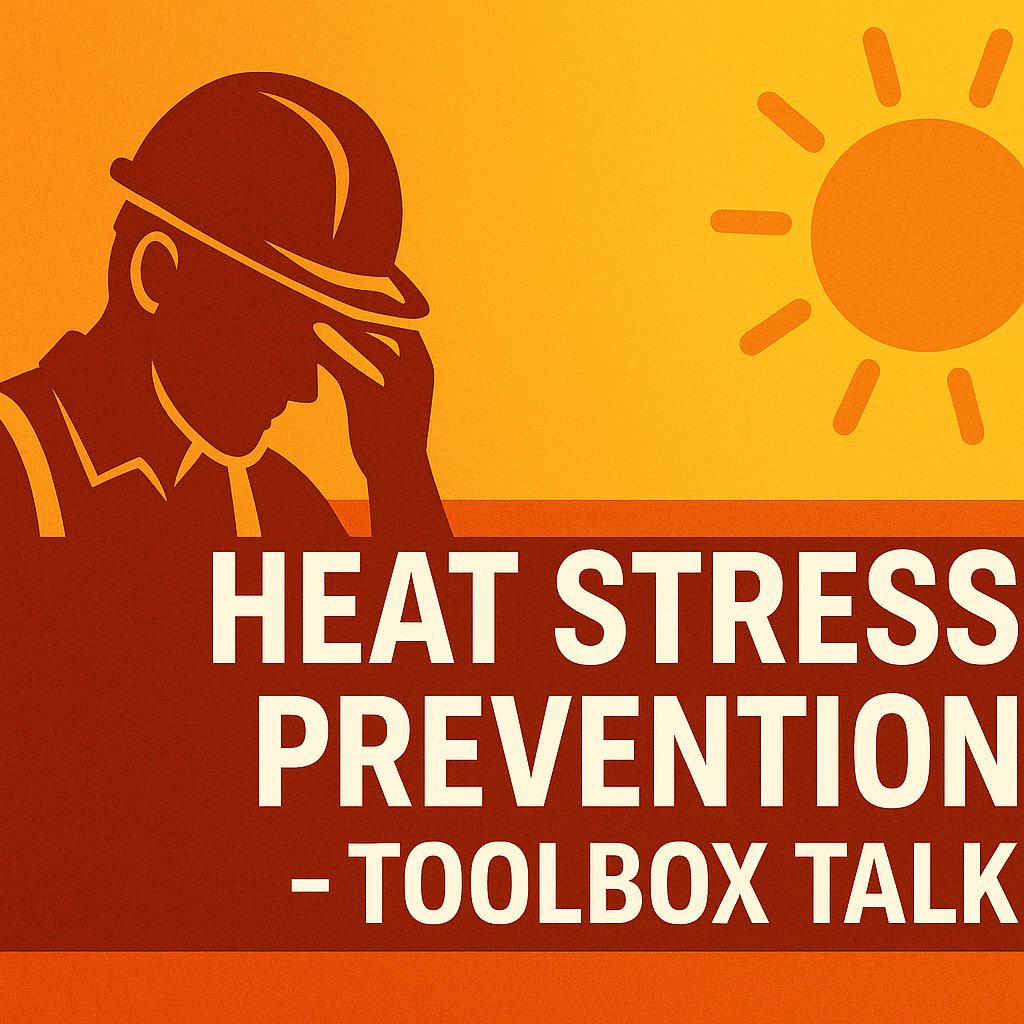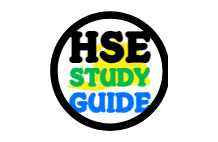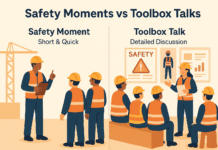
Heat Stress Prevention TBT
Good morning team,
Today’s safety talk is about Heat Stress Prevention — a serious workplace hazard that can sneak up on you quickly, especially during hot weather or in high-temperature work environments like foundries, kitchens, boiler rooms, and construction sites in the summer.
Heat stress isn’t just feeling uncomfortable — it can lead to heat exhaustion, heat stroke, dehydration, and even death if not addressed.
We’ll go through:
- Why heat stress matters
- Types of heat-related illnesses
- Risk factors
- Prevention strategies
- Symptoms and first aid
- Do’s and don’ts
- Real-life case study
- Closing message
1. Why Heat Stress Matters
- Your body works best at a stable temperature (~37°C / 98.6°F).
- In hot conditions, your body sweats to cool down — but excessive heat, humidity, and physical work can overwhelm this cooling system.
- Without proper hydration and rest, heat illness can set in quickly.
- Heat stroke is a medical emergency — without immediate treatment, it can be fatal.
2. Types of Heat-Related Illnesses
2.1 Heat Rash
- Irritation from excessive sweating.
- Looks like clusters of red pimples or blisters.
2.2 Heat Cramps
- Painful muscle spasms during or after intense sweating.
- Caused by loss of salts and fluids.
2.3 Heat Exhaustion
- Symptoms: heavy sweating, weakness, dizziness, nausea, headache.
- Caused by fluid loss and electrolyte imbalance.
2.4 Heat Stroke
- Most serious — body temperature rises above 40°C (104°F).
- Symptoms: confusion, seizures, loss of consciousness.
- Requires immediate medical attention — call emergency services.
3. Risk Factors
- High air temperature and humidity.
- Direct sun exposure.
- Heavy physical work.
- Wearing heavy or non-breathable PPE.
- Lack of acclimatization to hot conditions.
- Poor physical condition or certain medical issues.
- Alcohol, caffeine, or certain medications.
4. Prevention Strategies
4.1 Hydration
- Drink small amounts of water frequently — about 1 cup every 15–20 minutes.
- Avoid energy drinks and excess caffeine — they can increase dehydration.
4.2 Rest Breaks
- Take regular breaks in shaded or cool areas.
- Adjust work schedules to avoid peak heat times when possible.
4.3 Clothing and PPE
- Wear lightweight, light-colored, breathable clothing.
- Use cooling vests or bandanas if available.
4.4 Work Planning
- Gradually increase workload for new or returning workers to allow acclimatization.
- Use a buddy system — watch each other for signs of heat illness.
- Rotate tasks to reduce continuous heat exposure.
5. Recognizing Symptoms & First Aid
For Heat Exhaustion:
- Move to a cool area.
- Remove unnecessary clothing.
- Drink water slowly.
- Use cool compresses or fans.
For Heat Stroke:
- Call emergency services immediately.
- Move person to a cooler place.
- Cool rapidly with ice packs at armpits, neck, and groin, or soak clothing with cool water.
- Do not give anything to drink if the person is unconscious.
6. Do’s and Don’ts
✅ Do:
- Drink water before feeling thirsty.
- Take breaks in the shade.
- Wear appropriate clothing.
- Watch for symptoms in yourself and co-workers.
❌ Don’t:
- Ignore early warning signs of heat illness.
- Wait until you’re severely thirsty to drink.
- Push through discomfort in extreme heat.
- Wear heavy, dark, or non-breathable clothing in hot weather.
7. Real-Life Case Study
In 2021, a road construction worker collapsed during an afternoon shift in extreme heat. Co-workers noticed confusion and stumbling but thought he just needed water. Minutes later, he lost consciousness — he was suffering from heat stroke. Emergency cooling and hospital care saved his life, but he required weeks of recovery.
Lesson: Early recognition and quick action save lives.
8. Worker Engagement – Q&A
- How often should you drink water in hot conditions?
- Name two early symptoms of heat exhaustion.
- What’s the first thing you do if someone shows signs of heat stroke?
9. Closing Words – Bringing It Back to the Start
Alright team, we began today by talking about how heat stress isn’t just about feeling hot — it’s a serious health hazard that can kill if not managed.
Your best defense is preparation:
- Hydrate often.
- Rest in shade.
- Wear the right gear.
- Watch out for each other.
Remember: if you feel unwell, stop work immediately and get help. No job is worth risking your life over.
Stay alert, stay safe, and let’s have a productive — and cool — day.

























Thanks